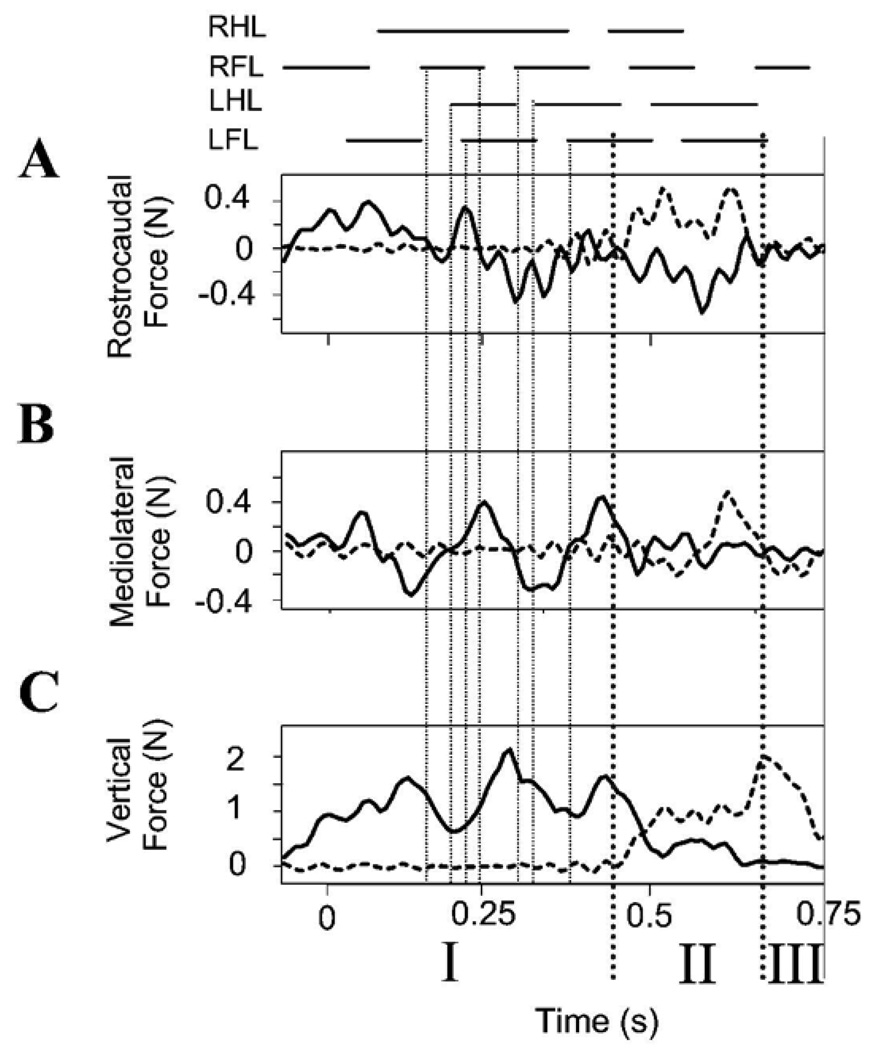Figure 8.
WS ST rats. Gait and all translational force components, showing greater lateral and rostrocaudal forces in different patterns from normal rats. Top: stance phase of each leg. Vertical dotted lines from stance onset for RFL, LHL and LFL are drawn to see relation of force fluctuations to gait. A: Propulsive (rostrocaudal) force: solid trace is sensor 1, dotted trace is sensor 2. These amount to 25% of body weight compared to 15% in normal rats. Zero crossings and peaks align with stance phase transitions. B: Mediolateral force: solid trace is sensor 1, dotted trace is sensor 2. These forces amount to 25% of body weight compared to 4% in normal rats. Note that these are the most cyclic deviations in this rat, together with the weight support forces, and these two force component patterns can be out of phase some of the time. C: Antigravity (vertical) force: solid trace sensor 1, dotted trace sensor 2. Phase I : rat only on sensor 1. Phase II: rat spanning sensors. Phase III: rat only on sensor 2. Timescale in seconds is shown at bottom.

